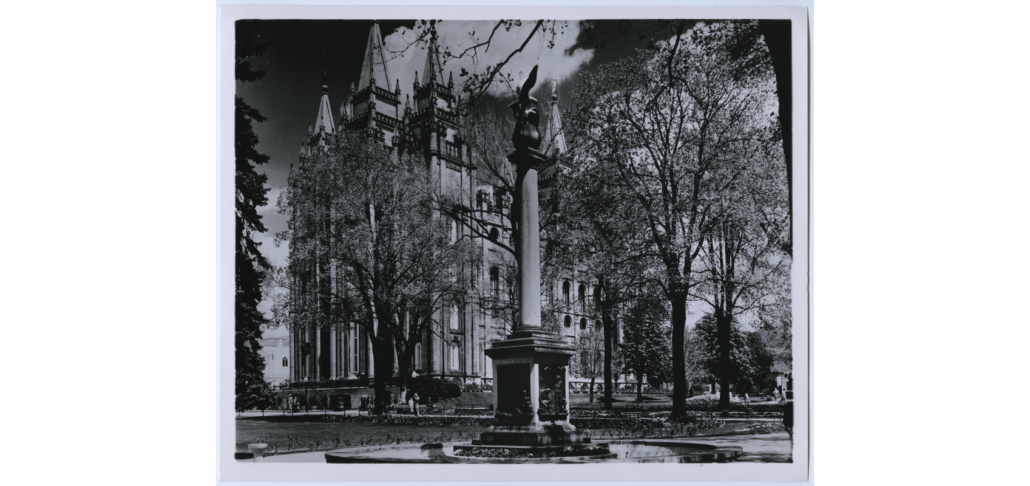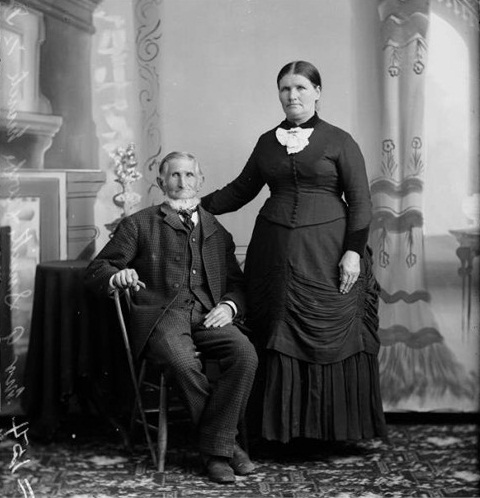Albert Smith and the Lessons of Seagulls and Mormon Crickets
The other day I went to turn on an outside faucet and it seemed to me my lawn was moving beneath my feet. We have been infested, along with the rest of the American West, with Mormon Crickets.
Without fail my mind turned to Grandfather Albert Smith.
Albert Smith was grandfather to Mary Ann Smith Westover, wife to Arnold Westover. He lived nearly every experience of a 19th century Mormon. Albert joined the Church around 1835, was headed to Far West and ended up in Nauvoo. He served a mission. His family lived in the same ward as Joseph Smith and he helped build the Nauvoo temple.
The Smiths were in the 1847 company of Brigham Young and Albert served in the Mormon Battalion. After his service he caught up with his family in Salt Lake, arriving just weeks after their late July arrival. He immediately set to work on his new farm, as all the settlers that year rushed to get in crops before winter.
Albert’s Salt Lake City farm was one of the scenes of the miracle of the seagulls we all learned about as children. As the story goes, Mormon Crickets descended on crops of grain in the valley threatening the food supply of the pioneers. The crops were saved by flocks of seagulls that came and devoured all the grasshoppers.
There is even a statue on Temple Square commemorating the event
But, as Albert’s journal tells the tale, there is a lot more to the story.
Albert wrote on that event in as it happened. He did not hold back in describing what took place:
“President Brigham Young addressed the saints told the Brethren not to be discouraged, but put in all the grain they could for they would not be hurt by the crickets, but, we should have an abundant harvest….The circumstance I will never forget. I put in 10 acres which was all I had and all the brethren put in all they could altho the ground was covered with crickets.
When I thought it time for it to be coming up I went to see it. My farming land was 8 miles from the city. I had heard that the seagulls had been seen in the field. When I got in sign of my grain I saw that it was covered with seagulls. I stopped till they flew to another part of the field. What was my joy and surprise when I went to the place and found every cricket destroyed. There was not a single one alive to be found while dead ones laid in heaps where the gulls had thrown them up on the ground they would fill themselves again…”
While Albert’s record confirms the legend I have found the story of Mormon Crickets didn’t end there.
Albert’s journal is a meticulous record of his farm productivity. Each season he would record how many acres he planted, what was planted and how much he was able to harvest. This was Albert’s living. Everything about his family’s survival depended upon his ability to raise and harvest crops.
So his journal is filled each year not only with the statistics of his production but also the challenges he faced each season. Drought and Mormon Crickets were constant problems. In fact, hardly a year went by when Albert wasn’t cursing their existence.
Sometimes, conditions got the better of him and he had to find other means to support his family.
One year the harvest was so poor Albert feared they would starve come winter. But a letter from a friend in far away Davis county said they had a good harvest and Albert could come glean the fields. So, by wagon and in the company of some of his children at home, Albert set out for Davis County. He returned several weeks later with a wagon load of grain he was able to gather after others had left it in the field.
Another year there was another crop failure. Albert was able, in his mid-60s, to work on the railroad to earn the money needed to get through the winter.
But overall, Albert’s journal makes consistent notes about his production: despite the never ending challenges, his production grew year after year overall. The “hoppers”, as he liked to call them, never went away. But his diligence, resourcefulness and persistence helped him to overcome in time to where they were not the challenge they first presented.
Albert was also persistent in his faith. He always expressed gratitude and acknowledged the hand of God in his pioneering work.
Albert had good reason to curse Mormon Crickets. I don’t. They infest my lawn and nibble at my wife’s garden. They mostly gross me out.
But they remind me of why Pioneer Day has become a sacred observance of sorts for me. I have tremendous respect for the unknown journal-keeper known as Albert Smith.
He, of course, was not alone in dealing with the Mormon Crickets. All of the pioneer settlers had to fight them. But his chosen course in dealing with them and other adversities inspiring me as we deal with the many challenges of our time.






Leave a Reply
Want to join the discussion?Feel free to contribute!